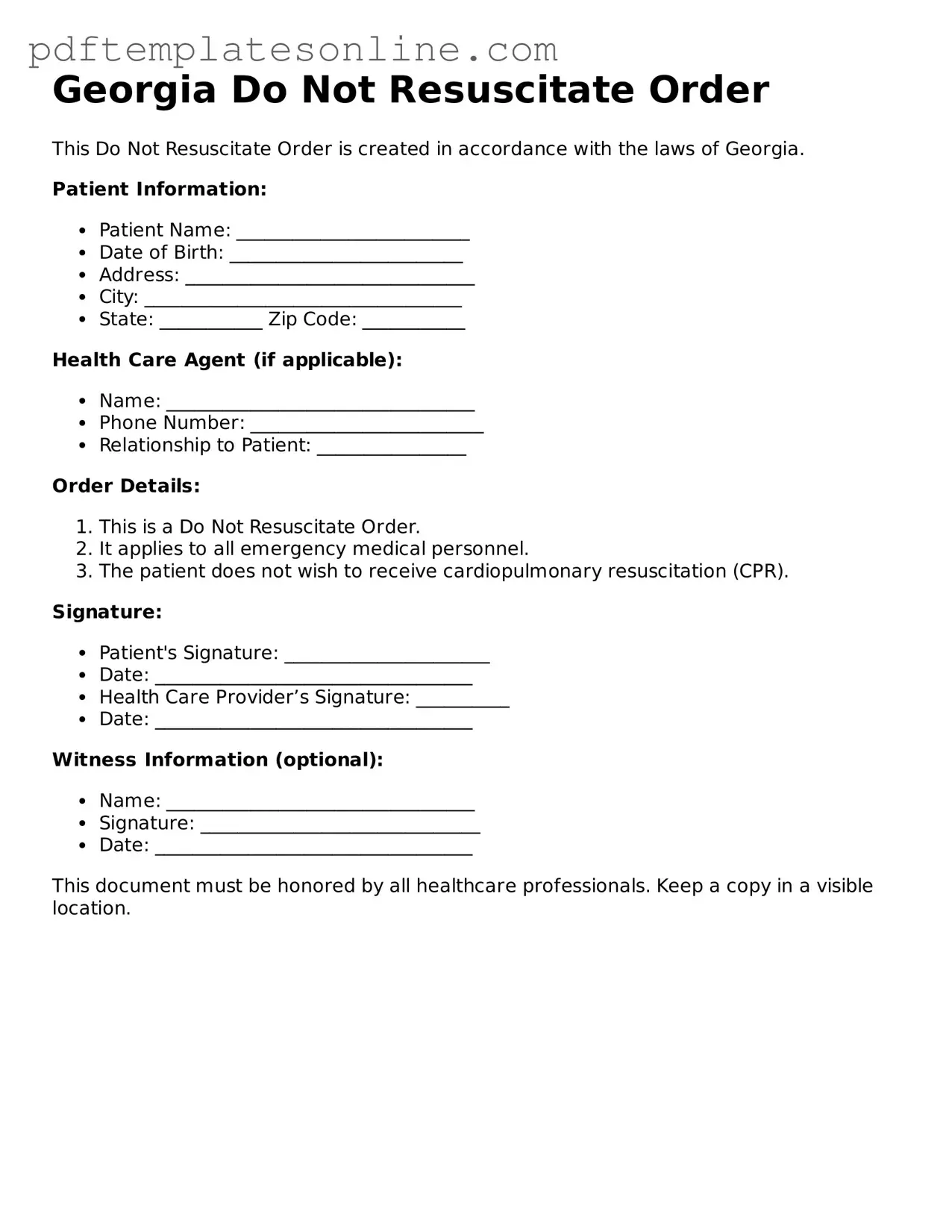Completing a Do Not Resuscitate (DNR) Order form in Georgia is a significant decision that requires careful consideration. However, many individuals make common mistakes that can lead to confusion or complications. Understanding these pitfalls can help ensure that the form accurately reflects one's wishes.
One frequent error is failing to provide complete personal information. The DNR form requires the full name, date of birth, and signature of the individual making the request. Omitting any of these details can render the document invalid. Additionally, it's essential to include the signature of a witness, as this adds credibility to the document.
Another common mistake is not discussing the decision with family members or healthcare providers. A DNR order can have significant implications for medical treatment. By having open conversations, individuals can ensure their loved ones understand their wishes, reducing potential conflict during critical moments.
Some people mistakenly assume that a DNR order is permanent and cannot be changed. In reality, individuals have the right to revoke or modify their DNR orders at any time. This flexibility allows for adjustments as personal circumstances or health conditions change.
Moreover, individuals sometimes overlook the importance of ensuring that the DNR form is easily accessible. If the document is stored away in a drawer or a folder, medical personnel may not be able to locate it when needed. Keeping a copy in a visible place, such as on the refrigerator or with medical records, can help ensure that it is readily available in an emergency.
Additionally, people may forget to review the form periodically. As life circumstances evolve, so too may a person's preferences regarding medical care. Regularly checking the DNR order ensures that it remains aligned with current wishes.
Another mistake involves misunderstanding the scope of the DNR order. Some individuals may incorrectly believe that a DNR order means that all medical treatment will be withheld. In fact, a DNR specifically addresses resuscitation efforts and does not affect other forms of care. Clarifying this distinction is crucial for both the individual and their healthcare providers.
Failing to consult legal or medical professionals can also lead to errors. While the DNR form is designed to be straightforward, seeking guidance can help clarify any uncertainties and ensure that the form complies with state laws.
Furthermore, individuals might neglect to inform their healthcare team about the existence of the DNR order. Communication with doctors and nurses is vital to ensure that everyone involved in a person's care is aware of their wishes. This can prevent misunderstandings and ensure that the individual's preferences are honored.
Lastly, some individuals may be hesitant to complete a DNR order due to fear or stigma associated with end-of-life discussions. However, taking the time to understand and complete the form can provide peace of mind, knowing that one's wishes are documented and respected.
